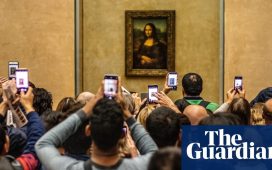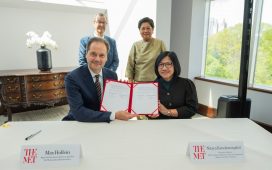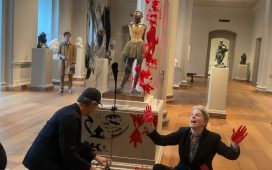For the past few decades, Western galleries have been doggedly exploring opportunities for growth in Asia. In the beginning, Hong Kong drew their interest with its free trade and investment policy, efficient governance, low taxation and more. Then they looked towards mainland China, with mixed results. But in the past couple of years, alongside regional art hubs such as Tokyo, Taipei, Singapore and Jakarta, it is Seoul that is getting the most attention, attracting an influx of international outposts and even Frieze art fair, which will debut next September with Patrick Lee as director.
In April, Berlin’s König Galerie opened a gallery on the fifth floor and terrace of the luxury boutique MCM Haus in Seoul’s Gangnam district. Then in September, Gladstone Gallery announced that it was going to open a gallery in the same area, directed by HeeJin Park, who previously worked at the leading Korean gallery Kukje. And this month, Thaddaeus Ropac opens his space in Hannam-dong.
According to local and regional art dealers, the reasons for this influx are the skyrocketing number of collectors in their 20s to 40s (due to the financial markets pandemic bubble), the increasing profits of local galleries and auction houses, and the proven success of first generation Western galleries such as Lehmann Maupin and Perrotin in Seoul. In fact, earlier this year, Pace, one of the first international galleries to launch a permanent outpost in the city, in 2017, opened its new and expanded two-floor space in Le Beige Building in Hannam-dong.
Another reason for Seoul’s success is that South Korea does not have import taxes on art or sales tax for any items below 60m won (around $51,000). Industry insiders also speculate that the arrival of Frieze Seoul in 2022 may have expedited Western galleries looking to open spaces in the city.
Other contributing factors include the development of significant cultural institutions in the past five years. Kukje’s managing director Bo Young Song says: “Institutions, both public and private, have successfully held blockbuster shows of major blue-chip artists such as Alexander Calder, Anish Kapoor and David Hockney, as well as supported the activities of important Korean artists such as Park Seo-Bo, Ha Chong-Hyun, and Lee Ufan.”
“Having been exposed to works by these great Modern and contemporary masters, both collectors and the general public have been quick to appreciate art. This meant investing disposable income into collecting art,” Bo adds.
On the other hand, Esther Kim Varet, the Korean-American co-founder of Various Small Fires gallery, based in Los Angeles and Seoul, realised that moving away from blue-chip art brought in new and different groups of local collectors, such as young professionals, who are interested in buying art at below $50,000.
In turn, this incites popularisation of the art world in South Korea. Even so, the connection between art and mainstream society is not a recent development. According to HeeJin Park: “Seoul has always been culturally rich, since Koreans naturally have in their blood the desire for aesthetic pursuit, and even from history one can find easily how important art and design was for everyday people. Being well dressed and looking good is very important for everyone, and people generally have a lot of interest in beauty in all areas.”
After all, Seoul is known for cosmetic surgery and beauty products as well as K-pop stars such as BTS and BLACKPINK whose style attracts a huge global following.
Inevitably, there are concerns about the proliferation of international galleries adversely impacting the local gallery scene. The Hong Kong-based art dealer Pascal de Sarthe, who has been travelling to South Korea frequently since the 1980s, says: “Most galleries opening satellite spaces in different countries are not after the local contemporary art culture. Instead, they aim to promote their artists and gain access to new local buyers.”
Park, however, believes the international migration is beneficial because “local galleries need to wake up, learn to compete with the real deal, and survive the market change”.
She thinks the South Korean art market has a long way to go, specifically with regards to logistics. “[There are] not enough professionally trained art handlers, not enough properly equipped storage spaces, not enough specifically designated art shippers. But I do believe that there’s always a first time for everyone and everything.”









